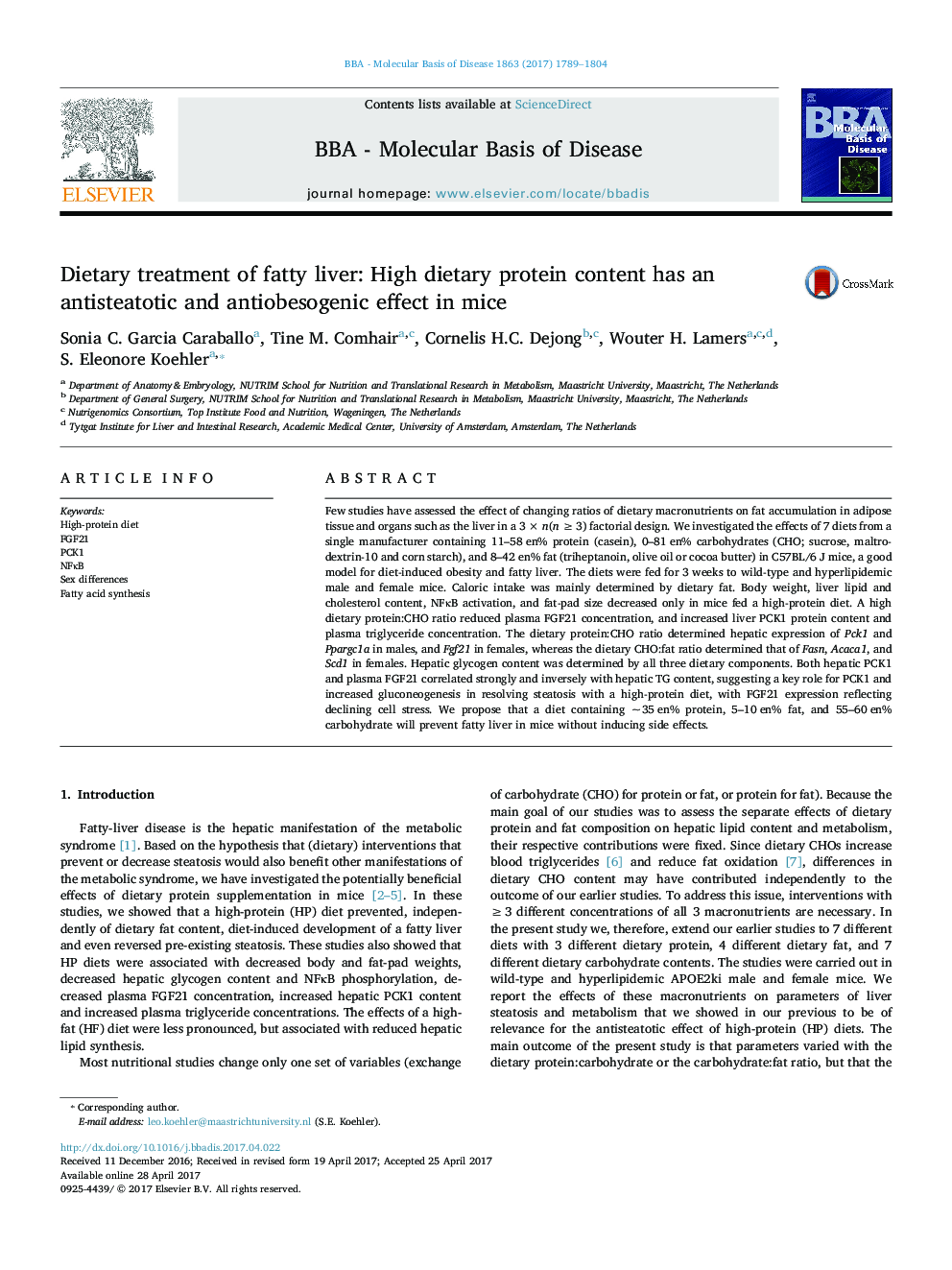| Article ID | Journal | Published Year | Pages | File Type |
|---|---|---|---|---|
| 5500952 | Biochimica et Biophysica Acta (BBA) - Molecular Basis of Disease | 2017 | 16 Pages |
Abstract
Few studies have assessed the effect of changing ratios of dietary macronutrients on fat accumulation in adipose tissue and organs such as the liver in a 3 Ã n(n â¥Â 3) factorial design. We investigated the effects of 7 diets from a single manufacturer containing 11-58 en% protein (casein), 0-81 en% carbohydrates (CHO; sucrose, maltrodextrin-10 and corn starch), and 8-42 en% fat (triheptanoin, olive oil or cocoa butter) in C57BL/6 J mice, a good model for diet-induced obesity and fatty liver. The diets were fed for 3 weeks to wild-type and hyperlipidemic male and female mice. Caloric intake was mainly determined by dietary fat. Body weight, liver lipid and cholesterol content, NFκB activation, and fat-pad size decreased only in mice fed a high-protein diet. A high dietary protein:CHO ratio reduced plasma FGF21 concentration, and increased liver PCK1 protein content and plasma triglyceride concentration. The dietary protein:CHO ratio determined hepatic expression of Pck1 and Ppargc1a in males, and Fgf21 in females, whereas the dietary CHO:fat ratio determined that of Fasn, Acaca1, and Scd1 in females. Hepatic glycogen content was determined by all three dietary components. Both hepatic PCK1 and plasma FGF21 correlated strongly and inversely with hepatic TG content, suggesting a key role for PCK1 and increased gluconeogenesis in resolving steatosis with a high-protein diet, with FGF21 expression reflecting declining cell stress. We propose that a diet containing ~ 35 en% protein, 5-10 en% fat, and 55-60 en% carbohydrate will prevent fatty liver in mice without inducing side effects.
Related Topics
Life Sciences
Biochemistry, Genetics and Molecular Biology
Ageing
Authors
Sonia C. Garcia Caraballo, Tine M. Comhair, Cornelis H.C. Dejong, Wouter H. Lamers, S. Eleonore Koehler,
